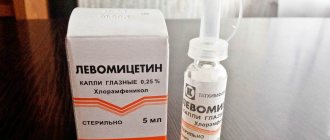Detailed description of the study
The functioning of all organ systems depends on the acid-base and water balance in the body. Any pathological processes lead to its disruption. Electrolytes—charged particles and ions of chemical elements—are responsible for maintaining balance. The main electrolytes include potassium (K+) and sodium (Na+). The level of their content in urine is one of the criteria for diagnosing various diseases. In addition, this indicator is used to monitor the therapy of a number of diseases and is assessed against the background of taking medications. Changes in the concentration of potassium and sodium in urine usually occur in parallel, since both electrolytes are similar in the mechanisms of filtration, absorption and excretion. However, isolated changes also occur.
Potassium (K)
Potassium ions are found mainly inside cells. Their content in the blood is much lower. Potassium is excreted from the body through the kidneys, and its level in the urine depends on the concentration in the bloodstream. In addition to the kidneys, potassium can be excreted from the body through sweat, as well as through the intestinal mucosa. Such elimination options are more typical for pathological conditions of the urinary system.
In the body, potassium ions perform important functions:
- Regulation of pH of blood plasma and intracellular fluid;
- Participation in the metabolism of proteins and carbohydrates;
- Activation of enzyme systems;
- Ensuring the conduction of nerve impulses;
- Regulation of blood pressure;
- Maintaining homeostasis;
- Participation in the contraction of skeletal muscles and smooth muscles of internal organs.
High potassium losses in the urine—hyperkaliuria—provoke the development of cardiac arrhythmia, a feeling of weakness and “goosebumps” crawling throughout the body. The amount of K+ excreted in the urine depends both on pathological disorders and on the characteristics of diet and age.
Reduced excretion of K+ ions through the kidneys - hypokaliuria - can serve as a sign of disturbances in the urinary system, in which case the symptoms may be as follows: Excretion of a large volume of urine;
- Weakness;
- Intense thirst;
- Muscle spasms;
- Arrhythmias.
Both hyperkaliuria and hypokaliuria are accompanied by characteristic changes when recording an electrocardiogram (ECG). A high level of potassium in the blood (hyperkalemia) with a simultaneous decrease in its concentration in the urine may indicate renal failure. If a lot of K+ is excreted in the urine, and hypokalemia is observed in the blood plasma, this may indicate the development of primary aldosteronism. In the case when a low K+ content is detected in both the blood and urine, we are talking about extrarenal electrolyte losses, for example, with increased sweating, vomiting, and diarrhea.
Sodium (Na)
Sodium ions, unlike K+, are located outside the cell plasma. This element is responsible for the distribution of water in tissues. It is excreted from the body in the same way - through the kidneys. A significant deviation in the sodium concentration in the urine may indicate a disturbance not only in the process of its excretion, but also in its intake, filtration, and metabolism. Without Na+, the body cannot exist normally, so long-term disruption of sodium metabolism can lead to serious complications.
The concentration of Na+ in urine is closely related to its content in the blood. Low plasma electrolyte levels—hyponatremia—can present with the following symptoms:
- Lethargy and weakness;
- Impaired consciousness;
- Nausea;
- Headache.
Elevated levels of Na+ in the blood manifest themselves with the following symptoms:
- Irritability;
- Muscle cramps;
- Thirst;
- Dry mouth;
- Reducing the single volume of urine.
With a high concentration of sodium in the blood against the background of a low level in the urine, we can talk about pathological processes occurring in the kidneys. If at the same time a high electrolyte content is observed in the urine, then extrarenal causes of the pathology are assumed.
The concentration of potassium and sodium ions in the urine is not constant during the day, and depends on many factors: diet, drinking regimen, physical activity, diseases, taking medications, and so on. Analysis of 24-hour urine to determine the content of K+ and Na+ is carried out in parallel with identifying their levels in the blood.
Sodium in 24-hour urine
General information about the study
Sodium is an element necessary for the normal functioning of the body. It interacts with minerals such as potassium and chlorine, and is also involved in the formation of electrical impulses in the nervous system and muscle contraction.
In addition, sodium is the main regulator of water and acid-base balance. Being in close contact with potassium, it controls the amount of electrolytes in intracellular and extracellular fluid (the ratio of sodium and potassium during metabolic processes is provided by the hormone aldosterone).
For people, the source of sodium is table salt; most people receive the daily requirement of this element. Sodium is found in all body fluids, but in greatest concentration in the blood and extracellular fluid. Extracellular sodium levels are controlled by the kidneys. In a healthy person, the concentration of electrolytes in the blood is stable, since their intake from food is balanced by excretion in stool and urine.
Mechanisms for maintaining sodium concentration:
- production of hormones that increase or decrease urinary sodium loss (natriuretic peptide and aldosterone),
- production of a hormone that prevents fluid loss in the urine (antidiuretic hormone),
- thirst control (antidiuretic hormone).
The absorption of sodium in the intestine is influenced by gastrin, secretin, cholecystokinin, and prostaglandins. The body takes part of the incoming sodium for its needs, and the kidneys excrete the rest in the urine, maintaining the electrolyte concentration in a very narrow range.
What is the research used for?
- If sodium in the blood is low or high - to determine the cause of the disorder - insufficient/excessive intake or excretion of the element.
- For differential diagnosis of diseases accompanied by disturbances of water-electrolyte and acid-base balance.
When is the study scheduled?
- The main role of sodium in metabolism is the control of acid-base balance and the amount of fluid, and its concentration depends on the secretion of pituitary hormones, the activity of hormones of the adrenal cortex, the interaction of substances of the renin-angiotensin-aldosterone system, as well as on absorption processes in the gastrointestinal tract . Therefore, this study is carried out for: diseases of the cardiovascular system (chronic heart failure, arterial hypertension),
- kidney diseases (chronic renal failure, nephritis),
- lesions of endocrine regulation organs (Addison's disease, diabetes mellitus, dysfunction of the pituitary gland).
References
- Klegman, R. Nelson Textbook of Pediatrics. — Saunder Elsevier, 2007. — 1800 p.
- Chernecky, C., Berger, B. Laboratory Tests and Diagnostic Procedures; 5th ed. — Saunder Elsevier, 2008. — 1232 p.
- Pepin, J., Shields, C. Advances in diagnosis and management of hypokalemic and hyperkalemic emergencies. - EmergMedPract., 2012. - Vol. 14(2). — P. 1-17.
- Kashif, W., Siddiqi, N., Dincer, A. et al. Proteinuria: how to evaluate an important finding. - CleveClin J Med., 2003. - Vol. 70(6). — P. 535-547.
Electrolytes (sodium, potassium, chlorine, calcium)
Sodium, potassium and chlorine are the body's main electrolytes.
Electrolytes are mineral compounds that are capable of conducting electrical charge. Being in tissues and blood in the form of salt solutions, they help move nutrients into cells and remove metabolic products from cells, maintain water balance and the required level of acidity in them.
Research method
Ion selective electrodes.
Units
mmol/l (millimoles per liter).
What biomaterial can be used for research?
Venous blood.
How to properly prepare for research?
- Eliminate alcohol from your diet for 24 hours before the test.
- Do not eat for 12 hours before the test.
- Do not smoke for 30 minutes before donating blood.
General information about the study
Electrolytes are mineral compounds that have an electrical charge. They are found in body tissues and in the blood in the form of salt solutions. Electrolytes contribute to the movement of nutrients into the body's cells and the removal of metabolic products from them, maintaining the water balance of cells and stabilizing acidity (pH).
The main electrolytes in the human body are sodium (Na+), potassium (K+) and chlorine (Cl-).
Most of the sodium is found in intercellular fluids. Potassium is found primarily inside cells, but small but vital amounts are found in plasma, the liquid part of the blood.
Monitoring potassium levels is very important. Even minor changes can affect the heart rate and the heart's ability to contract. Chlorides migrate through the membrane either inside or outside the cell and thereby maintain its electrical neutrality. Chloride levels usually correspond to sodium levels.
Sodium, potassium and chlorides enter the body with food, while the kidneys are involved in removing them from the body. The balance of these chemical elements is an important indicator of human health, particularly how the kidneys and heart function.
Measuring the levels of sodium, potassium and chloride together allows you to determine the anion “window” - the difference in the content of anions and cations in the blood. Its abnormal value is not a specific indicator, but suggests the presence of toxic substances in the body or the likelihood of metabolic abnormalities caused by fasting or diabetes.
Ionized calcium is a cation that circulates freely in the blood and makes up 46-50% of all blood calcium. Its level increases when blood pH decreases and decreases when alkalization occurs. For every 0.1 unit decrease in pH, ionized calcium responds with an increase of 1.5-2.5%.
Because electrolyte and acid-base imbalances are associated with a wide range of acute and chronic diseases, electrolyte testing can be ordered for both hospitalized patients and those newly presenting to emergency departments.
What is the research used for?
- For electrolyte screening and acid-base imbalance testing.
- To monitor the effectiveness of treatment for imbalances affecting the functioning of certain organs.
- The total blood calcium level is often sufficient for a preliminary assessment of calcium metabolism. It usually reflects the amount of free calcium in the blood, since often the balance between bound and free calcium is a stable and fairly predictable value. However, in some people this ratio is disrupted, so the level of total calcium is not a criterion for assessing overall calcium metabolism. In such cases, checking the ionized calcium becomes necessary.
What do the results mean?
Reference values
| Electrolyte | Reference values |
| Potassium | 3.5 - 5.1 mmol/l |
| Sodium | 136 - 146 mmol/l |
| Chlorine | 98 – 106 mmol/l |
| Calcium | 1.16 - 1.32 mmol/l |
Levels of potassium, sodium and chlorine depend on their dietary intake, body water content and the amount of electrolytes excreted by the kidneys. In addition, it is influenced by natriuretic proteins, which promote the excretion of sodium by the kidneys, as well as the hormone aldosterone, which maintains sodium concentration at a constant level and increases the body's loss of potassium.
Among all electrolytes, the most important indicators for a person are potassium and sodium levels. When kidney function is impaired, the body can sometimes retain excess fluid to dilute sodium and chloride so that its concentration drops below normal.
With severe fluid loss, the concentration of potassium, sodium and chlorides can increase sharply. Some forms of heart disease, muscle problems, nervous system problems, and diabetes also cause abnormal levels of one or more electrolytes.
To determine the cause of electrolyte disturbance and prescribe the correct treatment, it is important to find out which electrolyte balance is disturbed. If such abnormalities are not treated, the patient faces dizziness, seizures, irregular heartbeat and even death.
Reasons for increasing the level of ionized calcium:
- acidosis,
- excess vitamin D,
- malignant neoplasms,
- primary hyperparathyroidism,
- benign parathyroid adenomas,
- metastatic bone lesions.
- alkalosis,
- magnesium deficiency,
- pancreatitis,
- postoperative period,
- sepsis,
- injury,
- lack of vitamin D.
- Reasons for decreased ionized calcium levels:
Sodium chloride solution for infusion 0.9% 500 ml bottle 1 pc. in Moscow
When carrying out any infusion, it is necessary to monitor the patient’s condition, clinical and biological indicators, it is especially important to evaluate blood plasma electrolytes.
In children, sodium excretion may slow down due to immature kidney function. Therefore, in such patients, repeated infusions should be carried out only after determining the concentration of sodium in the blood plasma.
If a hypersensitivity or infusion reaction occurs, the infusion should be stopped immediately and the necessary therapeutic measures taken as indicated.
Depending on the volume and rate of infusion, intravenous administration of the drug may pose a risk of hypervolemia and/or solute overload and electrolyte imbalance.
In patients with renal failure, the drug should be used with extreme caution or not used at all. Use of the drug in such patients may lead to sodium retention.
Use the solution only if it is transparent, does not contain visible mechanical inclusions, and the bottle and cap are not damaged.
Administer immediately after connecting to the infusion system. The solution should be administered using sterile equipment in compliance with the rules of asepsis and antisepsis. To prevent air from entering the infusion system, it should be filled with solution, releasing any remaining air from the container completely.
As with all parenteral solutions, the compatibility of added substances with the solution must be determined before reconstitution. Drugs known to be incompatible with it should not be used with sodium chloride solution 0.9%. A physician should determine the compatibility of added medicinal substances with a 0.9% sodium chloride solution by checking for possible color changes and/or the appearance of precipitates of insoluble complexes or crystals. Before addition, it is necessary to determine whether the substance being added is soluble and stable in water at the pH level of a 0.9% sodium chloride solution. When adding a drug, it is necessary to determine the isotonicity of the resulting solution before administration. Before adding drugs to the solution, they must be thoroughly mixed in compliance with the rules; asepsis. The bottle is for single use only. The volumes of the drug remaining after use must be destroyed.
Freezing during transportation is allowed.
Impact on the ability to drive vehicles and machinery
Clinical studies have not been conducted to evaluate the effect of the drug on the ability to drive vehicles and operate machinery.










